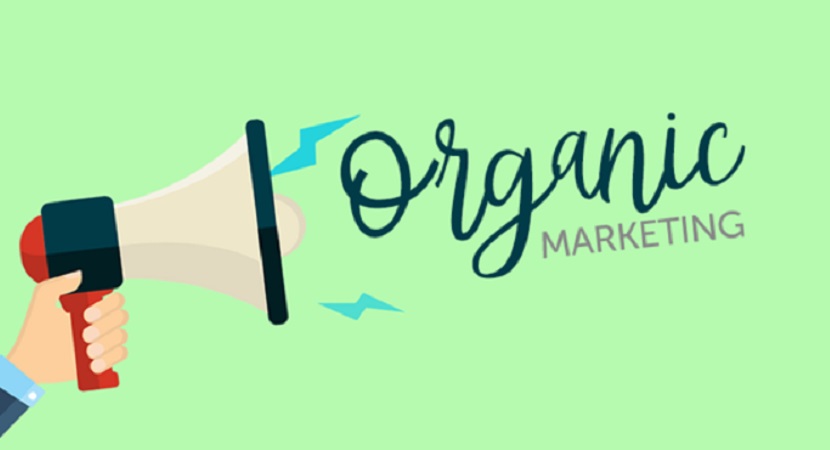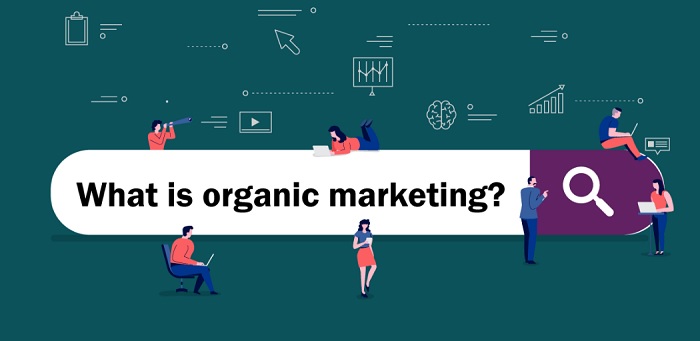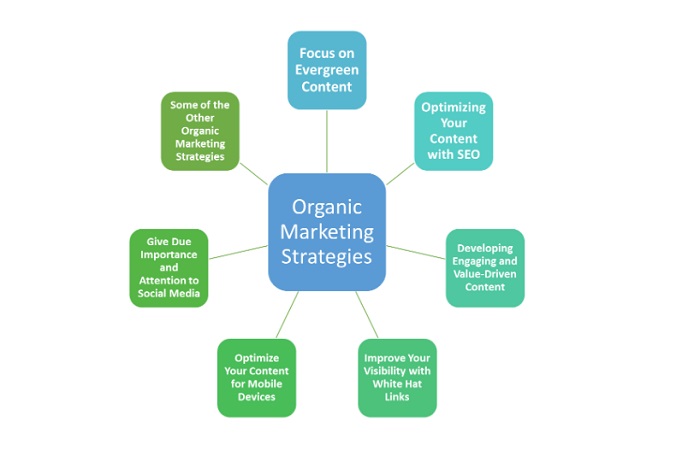Organic marketing can take many forms, including social media posts, blog articles, email newsletters, and SEO optimization. So, what is organic marketing? In this article, we will learn about this concept and how to use it.
Organic marketing is a strategy businesses use to build and promote their brand through natural means, and it prefers going for non-artificial means rather than using paid advertising. However, this type of marketing focuses on creating high-quality content that engages with the target audience and generates organic traffic to the business’s website.
Now, let us learn all about organic marketing in this article.
Definition of Organic Marketing & Implementation
The following are the steps to follow which will guide you to do organic marketing:
1. Define your Target Audience
The first step in any marketing strategy is to identify your target audience. You must understand your ideal customer. By doing this, you may tailor your messaging and content to appeal to their interests and needs.
2. Content Creation
To execute organic marketing, you must create high-quality, valuable content that resonates with your target audience. This includes blog posts, videos, infographics, and social media posts. Your content should educate, entertain, and inspire your audience. Focus on creating evergreen content that will remain valuable for months and even years after the initial post.
3. SEO Optimization
Optimize your website and content using relevant keywords, meta tags, and backlinks to rank higher in search engine results pages. This process is known as search engine optimization (SEO), and it improves your organic search visibility. Optimize your website and content using relevant keywords, meta tags, and backlinks to rank higher in SERPs.
4. Social Media Engagement
Social media platforms are a great way to connect with your target audience and build brand awareness. You can attract new customers and build brand loyalty by sharing valuable content, engaging with your followers, and running social media ads.
5. Email Marketing
Email marketing is a powerful tool that can be used for nurturing leads and keeping your customers engaged. Creating targeted email campaigns and offering valuable content can build a loyal customer base and increase sales.
6. Network and Collaboration
Building relationships with other businesses and influencers in your industry can help you expand your reach and attract new customers. You can build your brand by collaborating on content, running joint promotions, and attending industry events.
7. Measure your Results
To ensure the success of your organic marketing strategy, you need to track your results and make adjustments as needed. Use tools like Google Analytics to monitor your website traffic, engagement rates, and conversion rates to identify areas for improvement. Evaluating your website’s current traffic patterns and comparing them to your target audience is essential.
Pros and Cons
Let us take a look at the Pros and Cons of Organic Marketing:
| Pros | Cons |
|---|---|
| Cost-effective: Organic marketing strategies such as social media, content, and SEO do not require any upfront cost. Hence, this makes them an affordable option for small businesses with limited budgets. | Time-consuming: Organic marketing strategies can be time-consuming and require much effort to see results. For example, creating high-quality content that resonates with your audience can take time and resources. |
| Builds trust: It helps build trust with your target audience by providing valuable content that informs them about your products or services. This can help establish your brand as an authority in your industry. | Slow results: Organic marketing strategies may take longer to show results than paid advertising, which can be frustrating for businesses needing immediate returns on their marketing investments. |
| Long-term results: These strategies may take longer to show results but have a longer lifespan than paid advertising. For example, a blog post can drive traffic and generate leads long after publication. | Requires expertise: Organic marketing strategies such as SEO require a certain level of expertise and knowledge to implement effectively. This can challenge businesses that need more skills or resources. |
| Increased brand awareness: Organic marketing techniques like SEO can increase your brand's visibility and reach a wider audience. | Limited reach: Organic marketing strategies may reach fewer people than paid advertising. For example, social media algorithms can limit the reach of organic posts, making it harder to reach your target audience. |
Common Examples of Organic Marketing
Here are some of the common examples of Organic Marketing:
1. Content Marketing
Content marketing involves creating high-quality, informative, and engaging content that educates, informs, or entertains your target audience. This includes blog posts, videos, podcasts, infographics, and social media posts. By providing valuable content, you can attract and retain customers, build trust, and establish yourself in your industry.
2. Search Engine Optimization (SEO)
SEO involves optimizing your website and content to improve its visibility on search engines like Google, Bing, and Yahoo. This involves using keywords, meta tags, backlinks, and other techniques to enhance your website’s relevance and authority. Improving this ranking can attract organic traffic to your website and generate more leads and sales.
3. Social Media Marketing
Social media marketing involves using social media platforms like Twitter, Instagram, LinkedIn, and YouTube to reach your target audience. This, however, consists in creating engaging content, building a community, and interacting with your followers. Social media marketing is a powerful way to build brand awareness, increase engagement, and drive traffic to your website.
FAQs
Q1. What is organic marketing called?
Organic Marketing is also called 'Inbound Marketing.' This natural or non-artificial type of marketing involves creating content that naturally attracts customers without the use of paid advertising. For example, it includes SEO, referral, email, influencer, content, and social media marketing.
Q2. What is the organic vs. inorganic market?
Inorganic growth is the expansion a company experiences by purchasing other businesses or launching new locations. Organic growth refers to internal growth from the company's operations, often assessed through same-store or comparable sales. Acquisitions can immediately impact a company's earnings and market share, boosting them significantly.
Q3. What is organic strategy?
The organic strategy uses natural, non-paid methods to attract and retain customers. It involves creating valuable content and experiences designed to engage and build relationships with potential and existing customers.
Q4. What is organic search vs. SEO?
While organic search and SEO are unrelated, they are not the same. Organic search is a natural process that occurs when a user searches for something online. In contrast, SEO is a deliberate effort to improve the ranking of a website or web page in search engine results.
Conclusion
Overall, organic marketing is a powerful tool for businesses looking to build their brand and connect with their target audience meaningfully. By creating high-quality content and focusing on natural promotion methods, businesses can establish credibility, build a loyal following, and ultimately grow their business over time. It is important to note that organic marketing strategy has pros and cons.
Therefore, businesses should consider their specific goals and budget when deciding which approach to take, while also recognizing the importance of Boilerplate In Marketing for maintaining consistent messaging and brand identity across all communication channels.





